You can define a character map. Here's one to get you started.
let circledMap: [Character : Character] = ["A": "", "B": "", "C": "", "D": ""] // The rest are left as an exercise
let circledRes = String("abacab".uppercased().map { circledMap[$0] ?? $0 })
print(circledRes)
If your map contains mappings for both upper and lowercase letters then don't call uppercased.
Create whatever maps you want. Spend lots of time with the "Emoji & Symbols" viewer found on the Edit menu of every macOS program.
let invertedMap: [Character : Character] = ["a": "ɐ", "b": "q", "c": "ɔ", "d": "p", "e": "ǝ", "f": "ɟ", "g": "ƃ", "h": "ɥ"]
In a case like the circled letters, it would be nice to define a range where you can transform "A"..."Z" to ""..."".
That actually takes more code than I expected but the following does work:
extension String {
// A few sample ranges to get started
// NOTE: Make sure each mapping pair has the same number of characters or bad things may happen
static let circledLetters: [ClosedRange<UnicodeScalar> : ClosedRange<UnicodeScalar>] = ["A"..."Z" : ""..."", "a"..."z" : ""...""]
static let boxedLetters: [ClosedRange<UnicodeScalar> : ClosedRange<UnicodeScalar>] = ["A"..."Z" : ""..."", "a"..."z" : ""...""]
static let italicLetters: [ClosedRange<UnicodeScalar> : ClosedRange<UnicodeScalar>] = ["A"..."Z" : ""..."", "a"..."z" : ""...""]
func transformed(using mapping: [ClosedRange<UnicodeScalar> : ClosedRange<UnicodeScalar>]) -> String {
let chars: [UnicodeScalar] = self.unicodeScalars.map { ch in
for transform in mapping {
// If the character is found in the range, convert it
if let offset = transform.key.firstIndex(of: ch) {
// Convert the offset from key range into an Int
let dist = transform.key.distance(from: transform.key.startIndex, to: offset)
// Build new index into value range
let newIndex = transform.value.index(transform.value.startIndex, offsetBy: dist)
// Get the mapped character
let newch = transform.value[newIndex]
return newch
}
}
// Not found in any of the mappings so return the original as-is
return ch
}
// Convert the final [UnicodeScalar] into a new String
var res = ""
res.unicodeScalars.append(contentsOf: chars)
return res
}
}
print("This works".transformed(using: String.circledLetters)) //
The above String extension also requires the following extension (thanks to this answer):
extension UnicodeScalar: Strideable {
public func distance(to other: UnicodeScalar) -> Int {
return Int(other.value) - Int(self.value)
}
public func advanced(by n: Int) -> UnicodeScalar {
let advancedValue = n + Int(self.value)
guard let advancedScalar = UnicodeScalar(advancedValue) else {
fatalError("\(String(advancedValue, radix: 16)) does not represent a valid unicode scalar value.")
}
return advancedScalar
}
}
